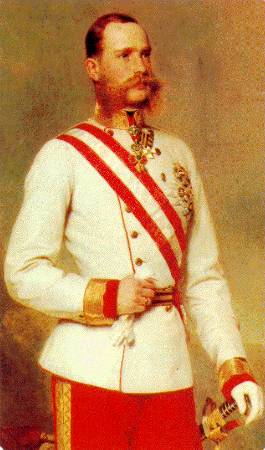Vienna history
once upon a time...
This wonderful city is officially a thousand years old, but its history goes back even farther than the year 996.
Around 100AD, the Romans established a military camp along the northern border of their empire on the Danube River. This fortress served to ward off the Germanic tribes north of the river. This encampment was called 'Vindobona' and was located in the area of today's Graben, Maria am Gestade, Riprechtskirche, and Rotenturmstrasse. As often happened, a town developed next to the military settlement and became what we now know as 'Vienna'. Excavated ruins of 'Vindobona' are open to the public. They can be found under Am Hof and Hoher Markt, in the centre of Vienna.
Towards the end of the first century, an Ampitheatre was erected and was often used as a military exercise area (see left). When the Roman Empire collapsed and the Romans left, the town that grew up around the military camp remained. 'Wemia' was mentioned in records in Salzburg late in the 9th Century. Within the next hundred years, Hungarians took over the area, followed by the Babenbergs. The Babenbergs, Emperor Otto I established the area which was east of his domain, hence the name Ostarichi (Austria).

In 1805 and again in 1809, Napoleon made war on Austria and occupied Vienna. He was finally defeated by Austria, England, Prussia and Russia and by 1815, the balance of power was restored by the Congress of Vienna. For another thirty years there was relative calm, until an uprising against the police-state type of govenment run by Metternich successfully toppled the monarchy. Democracy was short lived however, and the military soon placed the Habsburgs back in power. At the age of 18, Emporer Francis Joseph I succeeded to the throne.
In 1857, Francis Joseph I ordered the demolition of the city walls. In its place, the Ringstrasse was built. This magnificent boulevard not only showcases the architecture of the old city...it brought the outlying districts into the city. The latter half of the 19th Century was marked by an increase in population as people flocked to Vienna. In 1916, Francis Joseph died and within two years, the monarchy had crumbled. With the end of the Austro-Hungarian Empire, the Republic of Austria was founded. Riddled with economic probelms, the new Republic managed to survive, only to be forced into an alliance with Nazi Germany in 1938.
Vienna became the provinence of the Third Reich. World War II took its toll on Vienna, being heavily bombed by the British and Americans. Many cultural treasures as well as houses were destroyed, not to mention the tremendous loss of life.
After the war, Vienna was occupied by the four Allies. However, permanent occupation was avoided with the Allies taking turns to control the city centre. In 1955, all foreign military had left and Austria became a self governing country once again.

Ampitheature
Around 1155, The Babenbergs moved their court to Vienna. About one hundred years later, while successfully warding off an Hungarian attempt to take over the border area, the Duke of Babenberg was killed, leaving no male heir. Ottocar II, King of Bohemia took over the Babenberg lands for about 30 years.
In 1276, Rudolf I of Habsurg mounted a campaign against Ottocar and in 1278, Ottocar was killed. Rudolf gave Austria to his two sons to rule in 1282 and the Habsburgs reigned until 1918. The Habsburg reign was marked first by insurrection, war, followed by a period of building and renewal which brought Vienna to the status of one of the most beautiful, fashionable, and glorious cities in the world.
In 1529, The Turks lay siege to the city of Vienna for the first time. Although they were unsuccessful, they remained in control of Hungary and were a serious threat for the next 150 years. During the Thirty Years War, Sweden also threatened Vienna. Around 1679, Vienna was ravaged by the infamous 'Black Death' which spread throughout most of Europe. Then, in 1683, the Turks again, lay seige on Vienna. The city was almost taken and was in desperation, when they were given help by an army of German and Polish troops. The Turks were sent in retreat and eventually driven out of Hungary and down to the Balkan Peninsula. Following the rout of the Turks, Vienna began to build and what followed is called the era of 'Vienna Gloriosa'.
From 1740 to 1790, Empress Maria Theresa and her son Joseph II made many reforms in Austria and Vienna. Among their accomplishments were the abolishment of torture, religious intolerance and monasteries that did not serve a chaitable and social service. They founded hospitals and opened the Prater and Augarten to everyone. They established elementary education for all and created a new government administration for the empire.


Franz Joseph I (1849-1916)
Austro-Hungarian Eagle

Home Before You Go When You Arrive What To Pack Useful To Know H istory of Vienna Transportation around Vienna WU Information Where To Eat Vienna Sights Excursions From Vienna